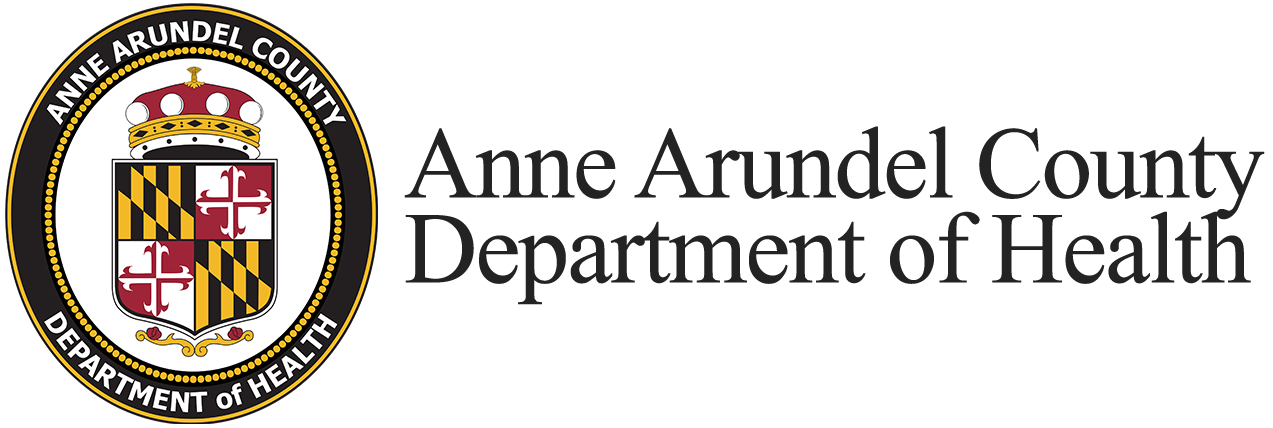What is COVID-19?
COVID-19 (novel coronavirus) is a disease caused by a respiratory virus first identified in Wuhan, Hubei Province, China. This was a new virus that had not caused illness in humans before. Worldwide, COVID-19 has resulted in over 270 million human infections, causing illness and hundreds of thousands of deaths. The widespread virus, which has caused over 800,000 United States deaths, has been reported in Anne Arundel County, Maryland with more than 55,000 cases and over 750 deaths.
What is the risk of COVID-19 in Anne Arundel County?
The COVID-19 coronavirus outbreak is a global pandemic. Federal, state and local governments have taken a comprehensive approach to keep Marylanders safe. For Maryland and Anne Arundel County confirmed COVID-19 cases to date, check the Maps. To slow the spread of COVID-19 and get the country back to normal, individuals will need to get vaccinated and practice healthy hygiene measures including frequent handwashing.
Who is at higher risk currently?
Unvaccinated people are at higher risk for COVID-19 than fully vaccinated individuals.
Unvaccinated older adults and people of any age who have serious underlying medical conditions are at higher risk for more serious complications from COVID-19.*
Based upon available information to date, those most at risk are listed at Medical Conditions and COVID-19.
How does COVID-19 spread?
COVID-19 is spread just like colds or flu through:
- coughing and sneezing, which creates respiratory droplets
- close personal contact, such as touching or shaking hands
- touching an object or surface with the virus on it
What are the symptoms of COVID-19?
The following symptoms may appear 2-14 days after exposure:
- Fever
- Cough
- Shortness of breath or difficulty breathing
- Chills
- Muscle pain
- Headache (new onset, severe headache, especially with a fever)
- Fatigue
- Sore throat
- New loss of taste or smell
- In more severe cases, pneumonia (infection in the lungs)
There are other symptoms for COVID-19, including diarrhea, nausea, vomiting and skin rashes.
NOTE: Symptoms usually appear within 2-14 days from time of exposure. Sometimes there are no signs or symptoms. Infected people without symptoms can still spread the disease. If you have concerns about any symptoms or possible exposure, call your health care provider or get tested. The Department of Health offers free rapid testing kits.
What are variants of COVID-19?
Viruses are constantly changing, including the virus that causes COVID-19. These changes occur over time and can lead to new strains of the virus or variants of COVID-19. Getting vaccinated can help slow new variants from developing.
If someone has COVID-19, what will happen to them?
Most people recover from this infection. Close to 80 percent will have mild or moderate symptoms. People with any symptoms can use testing as an additional prevention strategy to assist in making decisions to further protect yourself and others. To lessen the severity of symptoms, people who have COVID-19 should get medical advice.
Some COVID-19 infections can lead to serious illness, and in some cases death. If someone has a more serious illness from COVID-19, they may be admitted to the hospital. Older people and those with pre-existing medical problems have a greater risk for serious illness. Examples of pre-existing medical problems are cancer, diabetes, heart disease, COPD or other conditions impacting the immune system’s ability to fight germs.
If I don’t have symptoms, but was recently in contact with someone who tested positive, what do I do?
Follow the CDC’s recommendations for respiratory virus guidance.
What can I do to protect myself and others?
The CDC recommends that all people use core prevention strategies to decrease the spread of respiratory viruses. These are important steps you can take to protect yourself and others:
- Stay up to date with immunizations
- COVID-19 vaccinations are available at the Department of Health for eligible individuals. For appointments: AAHealth.org/covidvaccines
- Practice good hygiene (practices that improve cleanliness)
- Take steps for cleaner air
- When you may have a respiratory virus:
- Use precautions to prevent spread
- Seek health care promptly for testing and/or treatment if you have risk factors for severe illness; treatment may help lower your risk of severe illness
Additional prevention strategies you can choose to further protect yourself and others include:
Should the general public wear face masks?
Face mask recommendations and other COVID prevention recommendations are based on the county’s COVID-19 hospitalization level as defined by the Centers for Disease Control and Prevention. Per CDC recommendations, a well-fitting face mask is recommended to be worn at the end of isolation when testing positive for COVID-19 or after being exposed to COVID-19. Face masks provide extra protection from COVID-19 and its variants for both fully vaccinated and unvaccinated people. Here are guidelines on face coverings.
How can people be tested for COVID-19?
Anne Arundel County residents can be tested by primary care providers, pharmacies. The Department of Health offers free rapid testing kits.
If I have COVID-19, can my pet get it?
The CDC states that at this time, there is no evidence that animals play a significant role in spreading COVID-19. Human transmission of COVID-19 to animals is considered to be low.
Is there anything else I should know?
- Do not stigmatize people of any ethnicity. People who have not had close contact with a person who is ill with COVID-19, are at no greater risk of this disease than you. Viruses do not target people from specific populations, ethnicities or racial backgrounds.
- Stay informed and only get information from trusted, official sources. Be especially wary of myths, rumors, misinformation and scams circulating online and elsewhere. Health information spread on social media is frequently inaccurate.
